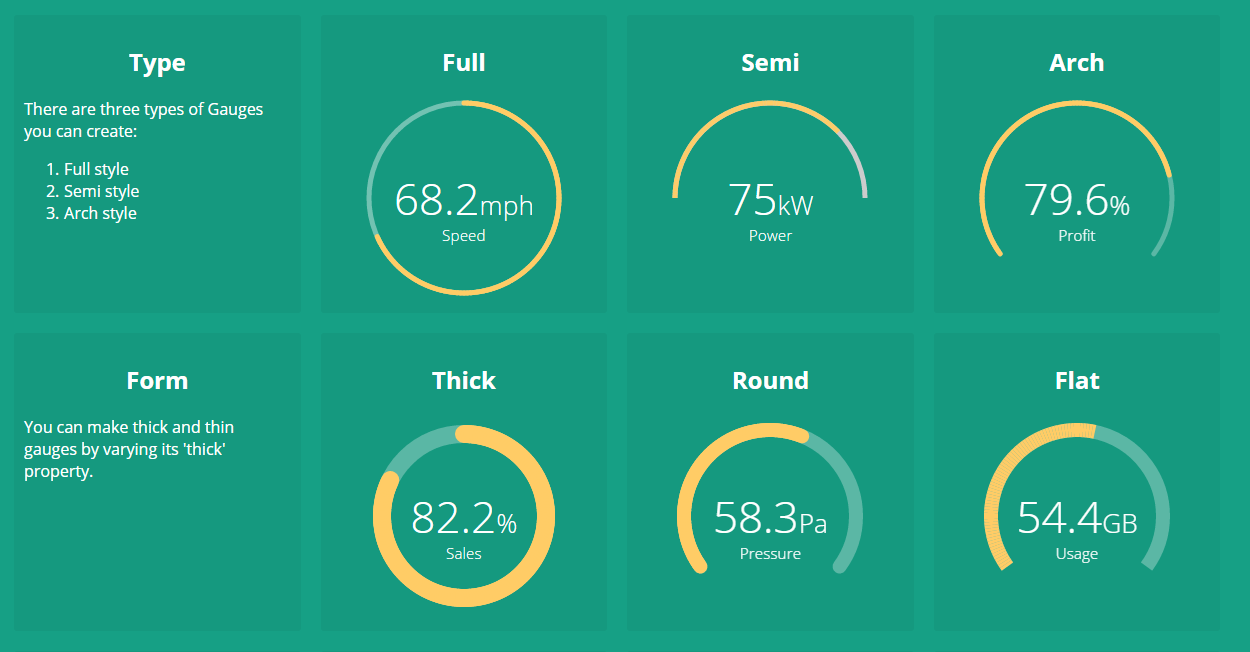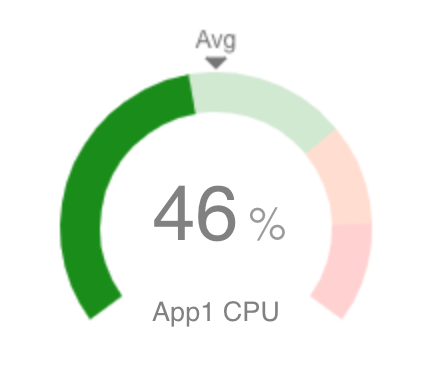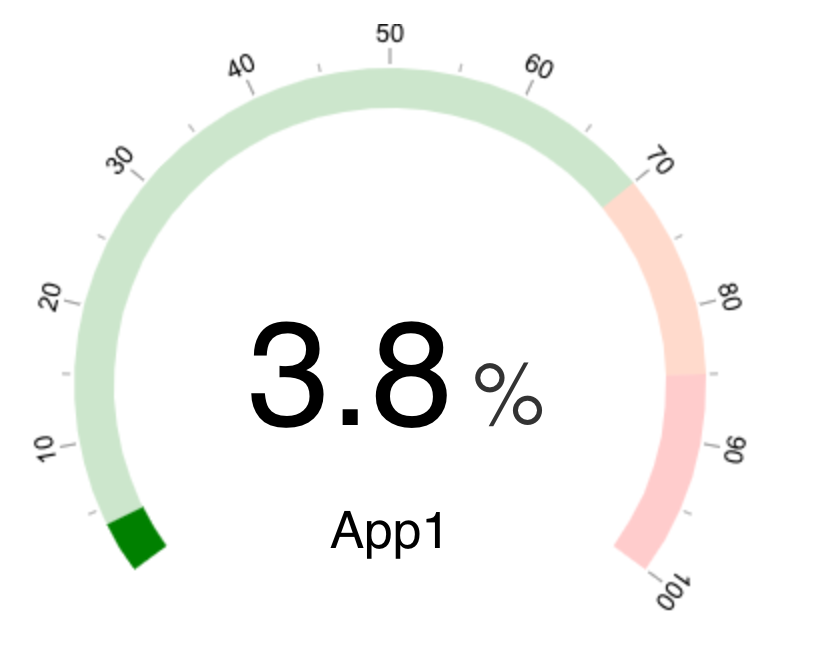https://github.com/ashish-chopra/ngx-gauge
A highly customizable Gauge component for Angular apps and dashboards
https://github.com/ashish-chopra/ngx-gauge
angular angular14 arc canvas dashboard dashboards data-visualization gauge gauge-chart gauge-component ivy meter speedometer threshold
Last synced: 7 months ago
JSON representation
A highly customizable Gauge component for Angular apps and dashboards
- Host: GitHub
- URL: https://github.com/ashish-chopra/ngx-gauge
- Owner: ashish-chopra
- License: mit
- Created: 2017-04-30T07:53:29.000Z (over 8 years ago)
- Default Branch: master
- Last Pushed: 2025-01-21T19:41:12.000Z (11 months ago)
- Last Synced: 2025-04-14T05:55:23.768Z (8 months ago)
- Topics: angular, angular14, arc, canvas, dashboard, dashboards, data-visualization, gauge, gauge-chart, gauge-component, ivy, meter, speedometer, threshold
- Language: TypeScript
- Homepage: https://ashish-chopra.github.io/ngx-gauge
- Size: 2.51 MB
- Stars: 219
- Watchers: 7
- Forks: 74
- Open Issues: 27
-
Metadata Files:
- Readme: README.md
- License: LICENSE.md
Awesome Lists containing this project
- trackawesomelist - ngx-gauge (⭐213) - A highly customizable Gauge component for Angular apps and dashboards. (Recently Updated / [Oct 01, 2024](/content/2024/10/01/README.md))
- awesome-angular - ngx-gauge - A highly customizable Gauge component for Angular apps and dashboards. (Third Party Components / Visual Effects)
- fucking-awesome-angular - ngx-gauge - A highly customizable Gauge component for Angular apps and dashboards. (Third Party Components / Visual Effects)
README
# ngx-gauge


[](https://github.com/ashish-chopra/ngx-gauge/issues)

A highly customizable Gauge component for **Angular** apps and dashboards. It provides many configurationable options to customize according to your needs. Checkout the live demo [here](https://ashish-chopra.github.io/ngx-gauge). (For older versions of Angular, check out the [compatibility matrix](#compatibility) below).

In version `v5.0.0`, we introduced markers, ticks and background opacity for gauge as shown below. Checkout the documentation below.


# Getting Started
#### Angular Version Compatibility Table
| Angular Version | ngx-gauge Version |
|--- |--- |
|6.0 | - |
|7.0 | - |
|8.0| 1.0.0-beta.12 |
|9.0 | 1.1.0 |
|10.x.x | 2.0.0 |
|11.x.x | 3.0.0 |
|12.x.x | 4.0.0 |
|13.x.x | 5.0.0 |
|14.x.x | 6.0.0 |
|15.x.x | 7.0.0 |
|16.x.x | 8.0.0 |
|17.x.x | 9.0.0 |
|18.x.x | 10.0.0 |
|19.x.x | 11.0.0 |
#### Step 1: Install npm module
For latest version use the command:
```bash
npm install ngx-gauge
```
For a specific version for an older Angular version as per [Compatibility table](#compatibility) above, use command:
```bash
npm install --save ngx-gauge@
```
#### Step 2: Import the _NgxGaugeModule_
```ts
import { NgxGaugeModule } from 'ngx-gauge';
@NgModule({
...
imports: [NgxGaugeModule],
...
})
export class AppModule { }
```
Be sure to import `NgxGaugeModule` after Angular's `BrowserModule`, as the import order matters for _NgModules_.
#### Step 3: Use gauge component in HTML
`NgxGaugeModule` provides a `` component which can be used in any angular template to render a gauge.
It's configuration properties can be bind to a typescript variable as shown below:
```ts
import { Component } from '@angular/core';
@Component({
selector: 'app-component',
templateUrl: 'app.html'
})
export class AppComponent {
gaugeType = "semi";
gaugeValue = 28.3;
gaugeLabel = "Speed";
gaugeAppendText = "km/hr";
}
```
```html
```
Checkout the extensive list of configuration properites given below and try them to acheive your desired customization. In case you face any problem, then raise an issue [here](https://github.com/ashish-chopra/ngx-gauge/issues).
# Configuration Properties
There are plenty of configurable properties available to tune the gauge as per your needs.
| Name | Description | Required | Default value | Possible values |
| --- | --- | --- | --- | --- |
| `size` | Specifies the size of the canvas in which Gauge will be drawn. It is used as `width` and `height` both. | No | `200` | Positive Integer |
| `type` | Specifies the gauge's type. | No | `"full"` | `"full"`, `"semi"`, `"arch"` |
| `min` | Specifies the minimum numeric value for gauge's scale. | No | `0` | Any numeric value |
| `max` | Specified the maximum numeric value for gauge's scale. | No | `100` | Any numeric value |
| `value` | Specifies the current value of the Gauge in the range specified by `min` and `max`. It is a required attribute. | Yes | `undefined` | Any numeric value |
| `cap` | The style of line ending at the gauge's end. | No | `"butt"` | `"round"`, `"butt"` |
| `thick` | Specified the thickness of the gauge's bar. | No | `6` | Any Positive Integer |
| `label` | Specifies the text to display below the Gauge's reading. | No | `undefined` | Any String |
| `foregroundColor` | Specifies the foreground color of the Gauge's scale. | No | `rgba(0, 150, 136, 1)` | Any color value string |
| `backgroundColor` | Specifies the background color of the Gauge's scale.| No | `rgba(0, 0, 0, 0.1)` | Any color value string |
| `append` | Specifies a `string` appended to the Gauge's reading. For example `"%"` most commonly used. | No | `undefined` | Any string |
| `prepend` | Specifies a `string` prepended to the Gauge's reading. For example `"$"` in case of financial data displayed in Gauge. | No | `undefined` | Any String |
| `duration` | Specifies the duration (in milliseconds) of the Gauge's animation | No | `1500` | Positive Integer |
| `thresholds` | Specifies an object of threshold values at which the gauge's color changes. Checkout an example [here](#configure-threshold-color-ranges). | No | `none` | {}
| `markers` | Specifies an object of marker values at which value to place a marker. Can be a line or triangle and optionally may specify color, size and label. Note if you use labels you should add to margin value to the gauge using the margin option | No | A special object of the format shown. Currently type supports "line" or "triangle" marker. ```{ "50": { color: "#555", type: "triangle", size: 8, label: "Goal", font: "12px arial" } , ... }``` | {} |
| `margin` | Specifies an optional margin for the gauge. | No | 0 | Positive Integer |
| `animate` | toggles the gauge animation. | No | `true` | boolean
| `aria-label` | Specifies the label used by screen readers | No | `undefined` | Any String
| `aria-labelledby` | Specifies the ID of any external element to be used as label by screen readers | No | `null` | Any ID String
## Configure Threshold Color Ranges
You can customize the colors of the gauge based on the current value being shown. In order to show different colors when gauge crosses certain value, use property `thresholds`. It takes an object with the threshold value as `key` and an object with `color` property as `value`. For example:
```ts
@Component({ ... })
export class AppComponent {
...
thresholdConfig = {
'0': {color: 'green'},
'40': {color: 'orange'},
'75.5': {color: 'red'}
};
...
}
```
```html
```
The keys in the threshold object signifies the minimum value at which the color will be applied. For instance, if the gauge's current value is `53.2`, then orange color will be applied because after point `40` every value will be displayed as `orange`, until next threshold is encountered. In this example `75.5` is the next threshold.
## Custom Directives for display text
Sometimes setting a property value on `` does not solve your purpose. You may want to add custom HTML for displaying `value`,`append`, `prepend` and `label` texts. In order to provide custom templates for these properties display following directives can be used.
```html
{{ currentValue * Math.PI | number }}
```
Note that `value` attribute is still required on `` even when you are providing custom template using ``. Because `value` attribute is responsible for calculating the gauge's drawing on a scale.
# Contribution Welcome!
The project is continously evolving with every new release. Give it a star, if you like it. For contribution, setup the development environment as follows:
1. clone and setup the project dependencies
```shell
$> git clone https://github.com/ashish-chopra/ngx-gauge.git
$> npm install
```
2. Use following commands based on what you'd like to do:
```shell
$> npm start # builds the project and watch for changes.
$> npm test # runs test suite once and exit.
$> npm run test:watch # starts the test framework and watch for changes in code.
$> npm run build # triggers a manual build for library, outputs at `/dist` directory.
```
3. To add a new feature or fix a bug, make sure to create a new branch from `master`.
First thing first, explore the [issue tracker](https://github.com/ashish-chopra/ngx-gauge/issues) to find something to contribute. There are tons of other project setup related issues and activities in which you can help. Your feedback could also be a great contribution.
If you face any problem, then raise an issue [here](https://github.com/ashish-chopra/ngx-gauge/issues).
# License
[MIT License](https://github.com/ashish-chopra/ngx-gauge/blob/master/LICENSE)